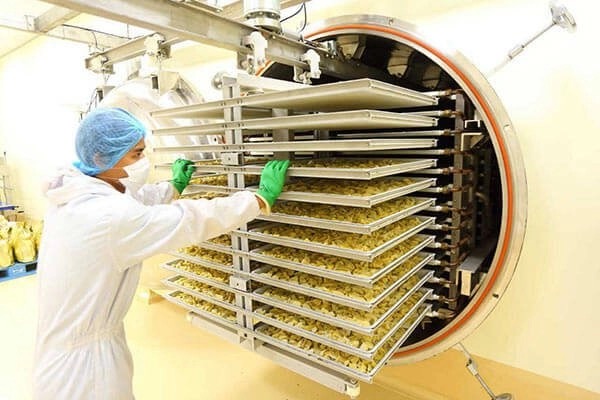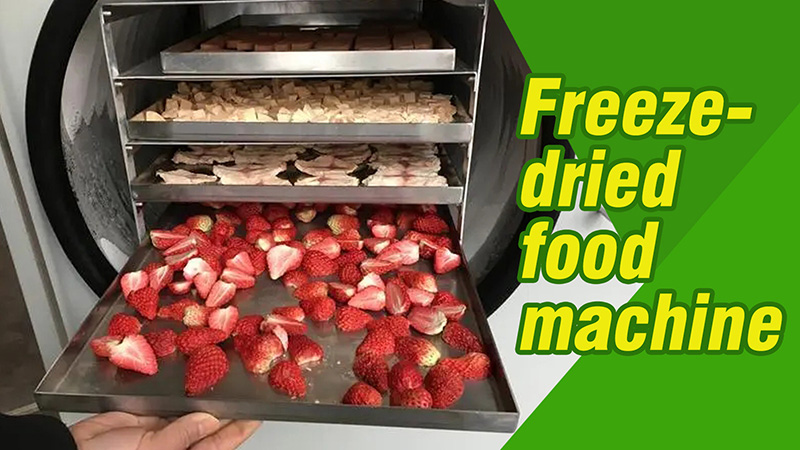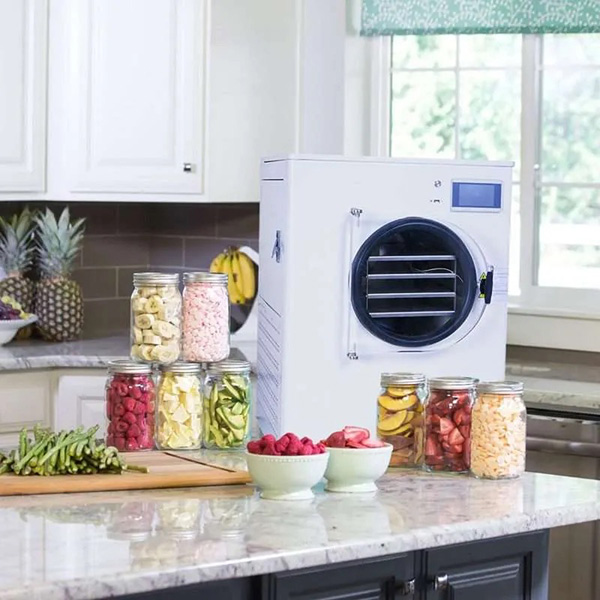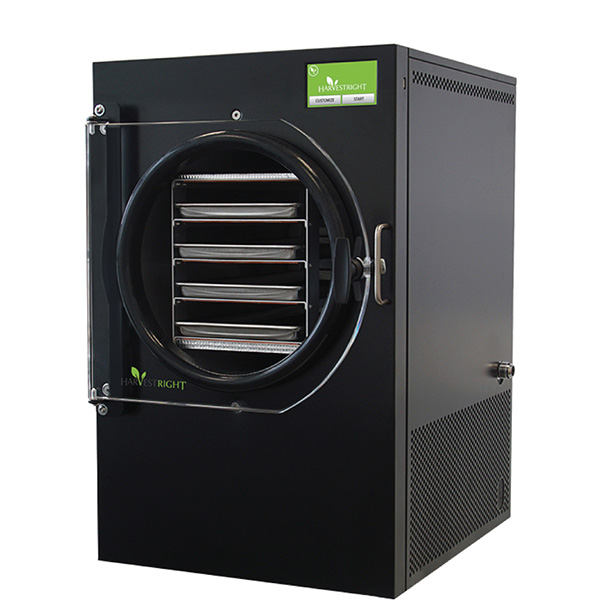
Content Menu
● Introduction to Food Dehydration
● Understanding Food Dry Machines
>> Key Components of a Food Dry Machine
● The Food Drying Process: Step by Step
>> 1. Preparation
>> 2. Arrangement
>> 3. Drying
>> 4. Cooling and Storage
● Benefits of Using a Food Dry Machine
>> 1. Extended Shelf Life
>> 2. Nutrient Retention
>> 3. Space-Saving Storage
>> 4. Flavor Concentration
>> 5. Versatility
>> 6. Cost-Effective
● Types of Food Dry Machines
>> 1. Stackable Tray Dehydrators
>> 2. Box and Shelf Dehydrators
>> 3. Solar Dehydrators
>> 4. Combination Dehydrator-Ovens
● Applications of Food Dry Machines
>> 1. Home Kitchens
>> 2. Commercial Food Production
>> 3. Restaurants and Catering
>> 4. Outdoor Enthusiasts
>> 5. Survivalists and Preppers
● Choosing the Right Food Dry Machine
>> 1. Capacity
>> 2. Temperature Control
>> 3. Airflow
>> 4. Noise Level
>> 5. Energy Efficiency
>> 6. Ease of Cleaning
● Tips for Successful Food Drying
● Popular Foods to Dry
>> Fruits
>> Vegetables
>> Herbs
>> Meats
>> Complete Meals
● The Future of Food Preservation: Innovations in Drying Technology
● Conclusion: Embracing the Food Drying Revolution
● Video Demonstration: Food Dry Machine in Action
● Frequently Asked Questions about Food Dry Machines
>> 1. How long does the food drying process typically take?
>> 2. Can all types of food be dried in a food dry machine?
>> 3. How do dried foods compare nutritionally to fresh foods?
>> 4. Are home food dry machines worth the investment?
>> 5. How do you rehydrate dried food?
Introduction to Food Dehydration
Food dehydration is an ancient preservation technique that has been revolutionized by modern technology. At the forefront of this evolution is the food dry machine, an essential appliance for both home cooks and commercial food processors. This comprehensive guide will explore the world of food dry machines, their applications, benefits, and the science behind this remarkable technology.
Understanding Food Dry Machines
A food dry machine, also known as a food dehydrator, is a device designed to remove moisture from food products through a controlled process of heat and air circulation. This process extends the shelf life of foods while preserving their nutritional value and flavor.
Key Components of a Food Dry Machine
1. Heating element: Generates warm air for drying.
2. Fan: Circulates air throughout the machine.
3. Trays: Hold food items during the drying process.
4. Temperature control: Allows users to adjust heat levels.
5. Timer: Enables precise control over drying duration.
The Food Drying Process: Step by Step
Understanding how a food dry machine works is crucial to appreciating its value. Let's break down the process:
1. Preparation
Before drying, food is typically washed, peeled if necessary, and cut into uniform pieces to ensure even drying.
2. Arrangement
Prepared food is spread out on the machine's trays, ensuring pieces don't overlap for optimal air circulation.
3. Drying
The machine circulates warm air around the food, gradually removing moisture. This process can take anywhere from a few hours to a day, depending on the food type and desired result.
4. Cooling and Storage
Once dried, food is allowed to cool before being packaged in airtight containers to prevent moisture reabsorption.
Benefits of Using a Food Dry Machine
Food dry machines offer numerous advantages over traditional preservation methods:
1. Extended Shelf Life
Properly dried foods can last for months or even years without refrigeration, reducing waste and saving money.
2. Nutrient Retention
Dehydration preserves most of the food's original nutrients, making it a healthier alternative to many other preservation methods.
3. Space-Saving Storage
Dried foods typically shrink, taking up less storage space than their fresh counterparts.
4. Flavor Concentration
Dehydration often intensifies flavors, creating tasty snacks and ingredients.
5. Versatility
A wide variety of foods can be dried, including fruits, vegetables, herbs, meats, and even complete meals.
6. Cost-Effective
By allowing users to buy in bulk and preserve foods at their peak, food dry machines can lead to significant savings over time.
Types of Food Dry Machines
Food dry machines come in various sizes and styles to suit different needs:
1. Stackable Tray Dehydrators
These versatile machines feature multiple trays that can be added or removed as needed, making them ideal for home use.
2. Box and Shelf Dehydrators
Often used in commercial settings, these larger units offer more capacity and consistent drying across all shelves.
3. Solar Dehydrators
Eco-friendly options that use solar energy to dry foods, perfect for off-grid living or reducing energy costs.
4. Combination Dehydrator-Ovens
Multi-functional appliances that can dehydrate, bake, and perform other cooking tasks.
Applications of Food Dry Machines
The versatility of food dry machines has led to their adoption across various sectors:
1. Home Kitchens
Many households use food dry machines to create healthy snacks, preserve garden harvests, and prepare ingredients for cooking.
2. Commercial Food Production
Food manufacturers use industrial-scale dryers to produce dried fruits, vegetables, and meats for retail sale.
3. Restaurants and Catering
Chefs use dehydrators to create unique textures and flavors, as well as to preserve seasonal ingredients.
4. Outdoor Enthusiasts
Hikers and campers rely on dried foods for lightweight, nutritious meals on the go.
5. Survivalists and Preppers
Food dry machines are essential tools for those preparing for emergencies or long-term food storage.

Choosing the Right Food Dry Machine
When selecting a food dry machine, consider the following factors:
1. Capacity
Determine how much food you plan to dry at once. Home units typically have 4-12 trays, while commercial machines can be much larger.
2. Temperature Control
Look for machines with adjustable temperature settings to accommodate different types of food.
3. Airflow
Efficient air circulation is crucial for even drying. Some models offer horizontal airflow for more consistent results.
4. Noise Level
Consider the machine's noise output, especially if you plan to run it overnight or in shared spaces.
5. Energy Efficiency
Look for models with good energy ratings to keep operating costs low.
6. Ease of Cleaning
Removable, dishwasher-safe trays can make maintenance much simpler.
Tips for Successful Food Drying
To get the most out of your food dry machine, follow these tips:
1. Cut foods into uniform sizes for even drying.
2. Blanch vegetables before drying to preserve color and nutrients.
3. Use lemon juice or ascorbic acid to prevent browning in fruits.
4. Rotate trays during drying if your machine doesn't have horizontal airflow.
5. Allow dried foods to cool completely before storage to prevent condensation.
6. Store dried foods in airtight containers in a cool, dark place.

Popular Foods to Dry
Food dry machines can be used for a wide variety of foods:
Fruits
Apples, bananas, berries, mangoes, and pineapples make excellent dried snacks.
Vegetables
Carrots, bell peppers, onions, and tomatoes can be dried for use in soups and stews.
Herbs
Preserve the flavors of basil, oregano, thyme, and other herbs for year-round use.
Meats
Create jerky from beef, turkey, or salmon for protein-rich snacks.
Complete Meals
Dry soups, stews, and casseroles for convenient camping meals or emergency food supplies.
The Future of Food Preservation: Innovations in Drying Technology
As technology advances, we can expect to see further innovations in food dry machines:
1. Smart features and IoT integration for remote monitoring and control.
2. Improved energy efficiency and faster drying times.
3. Integration with other kitchen appliances for seamless food preparation.
4. Development of new materials for more efficient heat distribution and air circulation.
5. Advancements in freeze-drying technology for home use.
Conclusion: Embracing the Food Drying Revolution
Food dry machines have transformed the way we approach food preservation, offering a convenient, efficient, and healthy method to extend the life of our favorite foods. From creating nutritious snacks to preparing for emergencies, these versatile appliances have found a place in kitchens around the world.
As we continue to seek ways to reduce food waste, save money, and enjoy healthy foods year-round, food dry machines will undoubtedly play an increasingly important role in our culinary lives. Whether you're a home cook looking to preserve your garden's bounty, a chef exploring new flavor possibilities, or someone interested in long-term food storage, a food dry machine could be a valuable addition to your kitchen arsenal.
By understanding the process, benefits, and applications of food drying, you'll be well-equipped to make informed decisions about incorporating this technology into your food preservation strategy. As we look to the future, it's clear that food dry machines will continue to evolve, offering even more innovative ways to enjoy our favorite foods while reducing waste and preserving nutrients.

Video Demonstration: Food Dry Machine in Action
To better understand how a food dry machine works in practice, watch this informative video demonstration:
This video by Excalibur Dehydrators shows the process of using a food dehydrator, providing valuable insights into the practical aspects of using these machines.
Frequently Asked Questions about Food Dry Machines
1. How long does the food drying process typically take?
Answer: The drying time can vary significantly depending on the type of food, its water content, and the desired level of dryness. Generally, fruits can take 6-16 hours, vegetables 6-14 hours, and meats 4-12 hours. Factors like the food's thickness, the dehydrator's efficiency, and ambient humidity can also affect drying time.
2. Can all types of food be dried in a food dry machine?
Answer: While most foods can be dried, some are better suited to the process than others. Fruits, vegetables, herbs, and lean meats work well. Foods with high fat content may not dry effectively and could become rancid. It's also not recommended to dry dairy products or eggs in a home food dehydrator.
3. How do dried foods compare nutritionally to fresh foods?
Answer: Dried foods retain most of their original nutrients, especially minerals. Some vitamins, particularly vitamin C and some B vitamins, can be lost during the drying process. However, the concentration of other nutrients often increases due to water removal. Overall, dried foods can be a nutritious alternative to fresh, especially when fresh options are not available.
4. Are home food dry machines worth the investment?
Answer: For many people, home food dry machines are a worthwhile investment. They allow for long-term food storage, reduce food waste, and can save money, especially for those who grow their own produce or buy in bulk. However, the initial cost and energy consumption should be considered when making the decision. The value often depends on how frequently you plan to use the machine and your specific food preservation needs.
5. How do you rehydrate dried food?
Answer: Rehydrating dried food is typically simple. Most foods can be rehydrated by soaking in hot or cold water, depending on the food type and intended use. For example, dried fruits can be soaked in hot water for about 15 minutes, while vegetables might need 30 minutes to an hour. Some dried foods, like herbs, can be used directly in cooking without rehydration. The rehydration time and method can vary, so it's best to follow specific guidelines for each food type.This comprehensive guide to food dry machines covers the key aspects of this innovative technology, from its basic principles to practical applications and future developments. By understanding the capabilities and benefits of these machines, you can make informed decisions about incorporating food drying into your culinary practices, whether for personal use or commercial applications.












